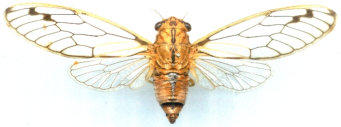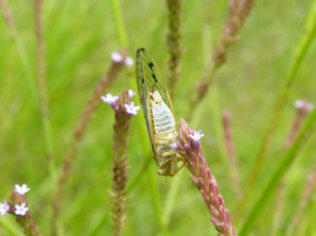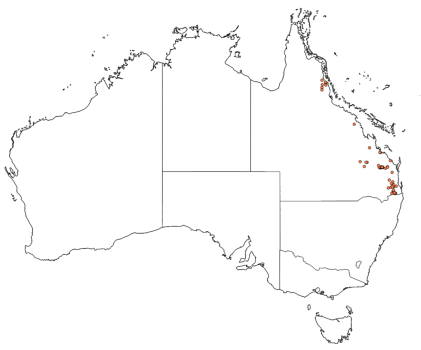Grass Faerie
Parnkalla muelleri (Distant, 1882)
© Popple Creative Industries 2014–2025





Male
Female
Other name(s):
Yellow Sugarcane Cicada.
Species number (TNS):
133.
Fore wing length: :
15–20 mm.
Distribution and seasonality:
Queensland, mostly east of the
Great Dividing Range from
Coen inland to Mt. Garnet south
to Carnarvon Gorge and further
south to the Lockyer Valley and
Brookfield (western Brisbane).
The species extends into
northern New South Wales
around Kyogle and also near
Moree. Adults are fairly short-
lived (approximately two weeks)
and populations emerge
following rain between October
and March.
Notable localities:
Proserpine, Yeppoon,
Rockhampton, Kingaroy,
Laidley, Moree (M. Coombs).
Habitat:
This species occurs in areas of
grassland, including pasture
grasses and sugarcane. Adults
also often occur on native and
introduced shrubs growing in
grassland.
Calling song and behaviour:
A coarse, high-pitched buzz,
with a pulsating component and
a continuous component. When
thousands of individuals are
singing, the chorus becomes a
piercing, and continuous. This
species can become incredibly
abundant upon emergence and
has been recorded as a pest
species in sugar cane (Moulds,
1990). In such large
emergences, clouds of
individuals take flight from taller
grasses and shrubs.
Colour variation:
Specimens exhibit limited
variation in colour.
Similar species:
Closest relatives are in the
genus Tamasa.

Habitat


dr-pop.net database record
Currently known extent



